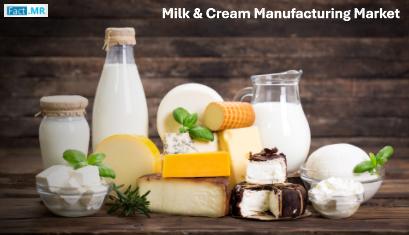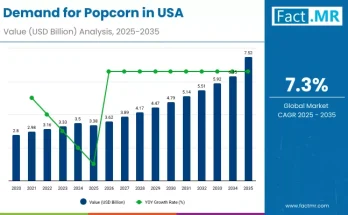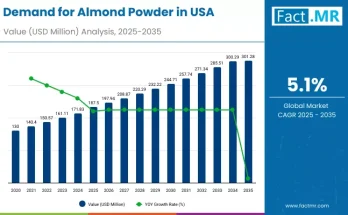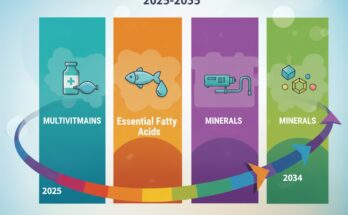The journey of milk and cream is very transformative and a story of innovation from the farm to the fridge of a consumer. The milk and cream manufacturing market has been driven by rising global demand and has evolved significantly over the last many years. Moreover, the factors that drive the growth are rise in dairy processing, customizing as per consumer preferences and an effective global supply chain.
Milk and cream are not just consumed during breakfast but these are the core elements of a multi-billion dollar industry that is expanding across the globe. Overall, the milk and cream manufacturing market includes various processes from production and processing to packaging of milk. And this is also related to products like powdered milk, condensed milk, and specialty creams.
Moreover, this is driven by rising demand for fresh and processed dairy products, awareness among consumers and also the increasing popularity of high-protein diets. Infact, manufacturers now a days cover a lot of variety of end users from bakeries, restaurants and households to large-scale food processers and retailers across the globe.
The milk and cream manufacturing industry is segmented into milk (further categorized into reduced-fat milk, whole milk etc), cream (fresh cream/whipped cream), Organic variants, lactose-free variants and evaporated and powdered milk products.
The Dairy Market:
The broader dairy market includes not just milk but it also includes cheese, butter, yoghurt, and specialty dairy ingredients that also includes milk and cream. This is an interconnected ecosystem that depends heavily on milk and cream manufacturing as its backbone. Key drivers in the dairy market include:
- Urbanization and population growth: Rise in population growth and urbanizations leads to increased dairy consumption.
- Value-added products such as fortified milk and flavoured creams are expected witness significant growth during the forecast period.
- Rise in the growth of Health-conscious consumers. Health conscious consumers prefer protein-rich dairy over sugary drinks. Due to high awareness spread by health and wellness influencers over social media platforms, products like yoghurt are on high demand.
- The rise of foodservice industries such as fast-food chains and cafes, that rely heavily on cream-based products.
Sustainability is a common trend and eco-conscious consumers seek dairy products with a lower carbon footprint. This change in the trend has put pressure on dairy producers to invest in water-recycling, clean energy, and animal welfare standards. This has been reshaping how milk and cream are produced and distributed.
Dairy Processing: Where Tradition meets Science
Dairy processing is a sophisticated operation that ensures consistency, safety, and flavour. Dairy processing includes lot of key stages for example:
- Pasteurization: This is the most important step in ensuring milk safety. The raw milk is first heated to a specific temperature for a set period to destroy harmful microorganisms like Salmonella, E.coli and Listeria. This process is helpful in extending the nutritional value of the milk.
- Homogenization: Homogenization is an important step in breaking down fat molecules into smaller sizes and overall, dispenses them evenly across the liquid.
- Separation and Standardization: At this stage, milk is separated into cream and skim milk. Moreover, the components are then reblended to achieve specific fat content levels such as low-fat milk, whole milk or heavy cream
- Fermentation (for cultured products): Selected bacterial cultures are introduced to ferment lactose into lactic acid.
- Spray Drying (for powdered dairy): Milk powder is a highly stable and transport-friendly form. The liquid milk or cream is dried using high-pressure spray nozzles in heated chambers.
With the introduction of automation, AI-driven quality control, modern dairy processing plants have become smarter and more efficient. These innovations are going to help meet growing demand for longer shelf life and consistent quality.
Milk and Cream Manufacturing in the USA
United States is the most largest and advanced dairy producers across the globe. States like California, Wisconsin, New York and Idaho lead in milk production. However, numerous plants across the country specialize in butter, dry milk and cream manufacturing.
US dairy farms have been following recent trends like clean-label trends, pushing for transparency in ingredients and processing methods. Moreover, various departments such as USDA, FDA, and state departments ensure strict quality control and food safety compliance.
Key highlights of the U.S. market include:
- Production Statistics: In the US, over 9 million dairy cows produce nearly 220 Bn pounds of milk annually.
- Highly automated cream production in the US caters to both domestic use and export markets.
- Various types of creams such as organic, grass-fed and flavored are trending and mostly among premium consumers.
- Milk powders and UHT milk are widely manufactured for military, emergency relief, and global supply chain use.
Full Cream Milk Powder Manufacturers: Meeting Global Demand
Full cream milk powder manufacturers play an important role in improving international food security. These products are not just versatile and shelf-stable but also offer a critical nutritional resource in various global areas.
Key manufacturers across the globe to meet growing global demand:
- Fonterra (New Zealand): Fonterra is a leading dairy exporters and world’s largest company. It offers full cream milk powder that is used across the globe from baby formula to baked goods.
- Nestle (Switzerland): Company is a nutrition giant and a renowned company that offers diverse categories of products. The company produces cream milk powder that is used for both industrial and consumer applications. This overall ensures quality standards.
- Lactalis (France): The company is based in France and it supplies full cream milk powder to more than 150 countries. The company is known for its wide variety of dairy products. Also, this meets both humanitarian and food industry needs.
- Friesland Campina (Netherlands): The company is known for sustainable sourcing and for high-quality milk powder that addresses the needs of developed and developing nations.
- Saputo (Canada): Saputo is based in Canada and is a one of the biggest players operating in North America. The company exports full cream milk powder for both food service industry and retail sectors across the globe
- Amul (India): Amul is one of Asia’s biggest dairy producers. The company plays an important role in regional food security and exports milk powder across the Middle East, Africa, and Southeast Asia.
From Crisis Relief to Global Trade: The Expanding Role of Full Cream Milk Powder
- Practical alternative to fresh dairy: Full cream milk powder provides an alternative to fresh dairy mostly in areas with limited refrigeration infrastructure. Areas where cold chain logistics are not reliable, have mostly full cream milk powder available for the consumers. It makes sure that consumers have access to essential nutrients without any need for refrigeration.
- Emergency Food Programs: Full cream milk powder is used as a compact, easy to transport source of protein. During various crisis situation whether caused by conflict or any disaster, it’s long shelf life is appropriate for stockpiling in aid packages and rapid distribution.
- High-Protein Diet Formulations: Full cream powder and sports supplements offer a rich source of energy and high-quality animal protein. It is also widely used in various formulation of fortified foods that address supporting recovery and malnutrition.
- Food manufacturing that is export oriented: Many food producers use full cream milk powder as an important ingredient in various options such as sauces, baked goods, confectionery and refurbished dairy products. Easy transportation, overall consistent quality, and extended shelf life has made it a suitable choice for manufacturers that are addressing international markets.
The milk and cream manufacturing market is not booming but also transforming. Every sector of the industry has been innovating from cutting-edge dairy processing technologies to the surge in full cream milk powder exports. As new markets open up and new dietary habits evolve, milk and cream are essential across industries and borders.



